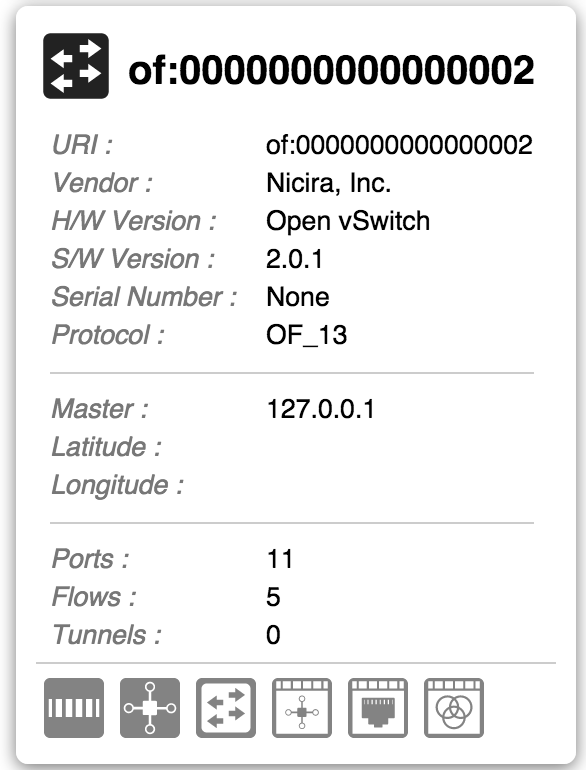...
An example of a panel is the details panel on Topology View.
| Name | Summary |
|---|---|
init | |
| createPanel | |
| destroyPanel |
...
| Initializes the PanelService. | |
createPanel | Creates a panel with specified name and options. |
destroyPanel | Destroys panel with the given name. |
Function Descriptions
init
Initializes the PanelService. You probably won't have to call this, since it is initialized when the UI starts.
| Example Usage | Arguments | Return Value |
|---|---|---|
| ps.init(); | none | none |
createPanel
Creates a panel with specified name and options.
| Example Usage | Arguments | Return Value |
|---|---|---|
var panel = ps.createPanel(id, opts); |
| an object with an API that contains actions that can be performed on the panel |
| Returned API Example Usage | Arguments | Return Value |
panel.show(cb); | cb - (optional) a function reference to be executed after the panel is done animating into the shown position | none The panel is now on the screen. |
panel.hide(cb); | cb - (optional) a function reference to be executed after the panel is done animating into the hidden position | none The panel is now off screen. If hideMargin was specified (see below) the panel will be visible for that pixel amount. |
panel.toggle(cb); | cb - (optional) a function reference to be executed when the panel is done animating into the shown or hidden position | boolean of if the panel is currently showing The panel will be on or off screen - the opposite of what it was before. |
| panel.empty(); | none | d3 selection of the panel element The panel's contents are now empty. |
panel.append(what); | what - string of the element tag to append to the panel. An example would be 'div'. | d3 selection of the panel element |
panel.width(w); |
This function is getter/setter. | if if |
panel.height(h); |
This function is getter/setter. | if if |
| panel.isVisible(); | none | boolean of if the panel currently showing |
panel.classed(cls, bool); |
| d3 selection of the panel element |
| panel.el(); | none | d3 selection of the panel element |
Options for Creating a Panel
These are the default settings that are used in creating a panel. You can overwrite them by providing an object for opts.
| Code Block | ||||||
|---|---|---|---|---|---|---|
| ||||||
var settings = {
edge: 'right', // edge of the screen the panel shows and hides from - top, bottom, left, right
width: 200, // width of the panel in pixels
margin: 20, // distance (pixels) from 'edge' to side of panel (when shown)
hideMargin: 20, // distance (pixels) from 'edge' to side of panel (when hidden)
// negative numbers show the panel when it's "offscreen"
xtnTime: 750, // animation time for the panel to transition from shown to hidden
fade: true // whether the panel fades on and off screen in transition
};
// height is a setting you can also provide (there is no default height) |
destroyPanel
Destroys panel with the given name. You generally want to do this when the view changes.
| Example Usage | Arguments | Return Value |
|---|---|---|
ps.destroyPanel(id); | id - string of the unique ID of the panel that you want to destroy | none the panel has been destroyed |
